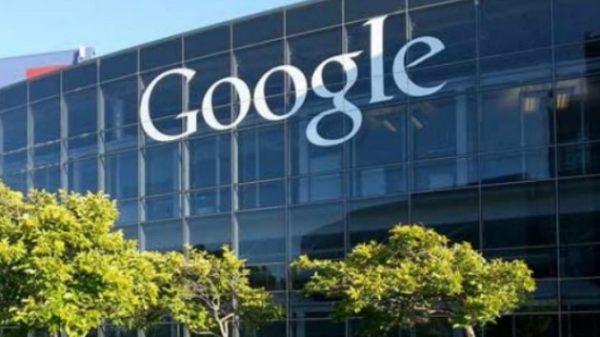The online symposium on the value of Internet Openness at the time of COVID-19 is a joint outcome of the Internet Governance Forum coalition on Net Neutrality and Community Connectivity. This is the second article in the series. Read all the articles in the symposium here.
By Vint Cerf
The novel SARS-COV-2 virus that leads to COVID-19 disease is teaching us a great many lessons about infrastructure writ large. We are discovering weaknesses in socio-economic safety nets, in our healthcare systems, public transportation system, our education systems and many others. Societies around the world are organized around a presumption that people can work, play and interact with each other in close proximity. Our dependence on this assumption has been upended by a virus that propagates through proximity and through the air and on commonly touched surfaces. Among the responses, social distancing has become a strong recommendation around the globe. But our physical infrastructure is operationally dependent on people being able to work together in proximity. That includes traveling together. One has only to look at the airline industry to see how quickly that mode of travel has evaporated. Schools have been closed in favor of remote education and “work from home” has become a guideline for those whose jobs permit it. For many, of course, work requires proximity, from haircuts to grocery stores, people need to be present. If that isn’t safe, many people cannot work and the economic impact is catastrophic.
To the degree that working and living can be done in some remote way, the Internet has become an important component of COVID-19 response. It permits remote interaction with customers and even patients. It allows people to order goods and services online for delivery to doorsteps. It provides researchers with access to global sources of information and to computing power in unprecedented quantities. The openness, interoperability and distributed nature of the Internet has contributed to its utility. Its scalability in many dimensions has allowed it to expand to accommodate new demands. Remarkably, the capacity to support streaming video is now also supporting real-time videoconferencing as a substitute for in-person meetings.
Of course, the Internet is not uniformly implemented. Only about one half of the world’s population appears to have direct access to the Internet and much of that is via mobile 3G-4G-5G services. There is a clear urban/rural Internet access divide. There is an economic divide as well. Even if the service is available, it may be unaffordable. In inner urban environments, cost may inhibit effective uses. These observations suggest several potential remedies. Physical build-out of Internet access is necessary. This could range from direct optical fiber access to homes, to free-space laser “middle miles”, to 5G mobile implementation. Where costs are high, subsidies may be warranted – not unlike the notion of Universal Telephone Service subsidized by a Universal Service Fund.
Novel ideas are emerging, like outfitting school buses with WiFi and parking them to provide residential access at night. Libraries and other public facilities as well as commercial enterprises are offering WiFi access to the Internet. Private sector companies such as SpaceX are placing tens of thousands of satellites in low Earth orbit with the intent of providing Internet access to every square inch of the Earth’s surface. Cost of Internet capable equipment is also coming down with low-cost pads, tablets and notebook computers. Given the rich varieties of Internet-based services aimed at facilitating socially distant economies, it is not hard to argue for policies that encourage more Internet infrastructure.
Of course, it cannot stop with the physical infrastructure. The operation of the Internet must be robust, safe, secure, reliable and adapted to improve privacy. Useful content must be available in locally common languages. The scourge of misinformation and disinformation needs to be attenuated and better global or at least bi-lateral or multi-lateral cooperation is needed to cope with harmful and criminal behaviors on the Internet. Strong authentication and cryptography are needed to defend against identity theft and hacking. Variations of the European Union’s General Data Protection Regulation (GDPR) are propagating around the world with good intent although implementation has shown some unintended consequences, not least of which may be the ability to share health information that would assist in finding a vaccine against SARS-COV-2.
As we try to move education to online modes of operation, it has become very apparent that learning this way is different from traditional teaching formats. Adapting online regimes to allow students to work together remotely, to allow teachers to track and coach student progress, to support individualized remedial lessons at need, among other things, highlights the challenges and opportunities that online education brings.
More directly associated with COVID-19 is the need for detecting exposure and tracking contacts to reduce the spread of the disease. Mobiles and the Internet appear to have roles to play for at least some tracking and tracing system designs. The application of machine learning to large medical datasets may help identify the ways in which SARS-COV-2 actually works. It seems that we are finding new syndromes triggered by this virus as research progress is made. We don’t know enough and we must learn more.
Among the stark lessons we have learned is the fragility of food and medical equipment supply chains, either because of excessive concentration or because transport connections are broken. We are seeing this dramatically in the United States where farmers have been unable to sell to restaurants that are closed or operating at much reduced capacity out of concern for the propagation of the virus. These lessons should teach us to create much more resilient infrastructure in every dimension. We need to refresh national stockpiles of protective equipment, medical devices and vaccines. More generally, we must imagine other potential global catastrophes and put in place plans to mitigate. The time to agree on best practices for emergency response is before the emergency, not during.
We must not allow this pandemic or a future one to become our society’s Titanic.
*
Widely known as a “Father of the Internet,” Vint Cerf is the co-designer of the TCP/IP protocols and the architecture of the Internet.





























